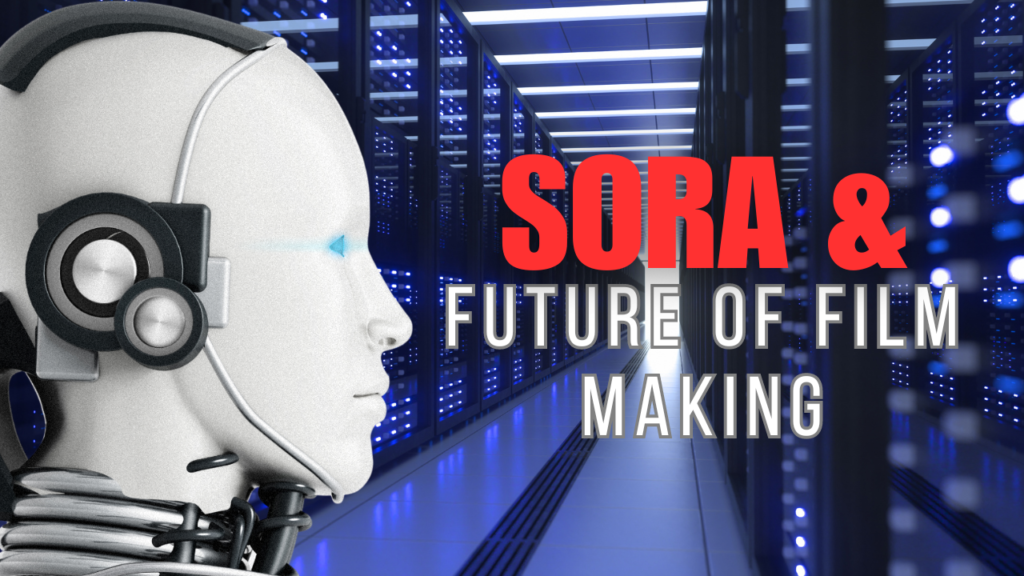This article delves into the capabilities and inner workings of Sora AI, a revolutionary text-to-video diffusion model developed by OpenAI. We’ll explore how it functions, the potential for Unreal Engine integration (a bunch of tools that developers can leverage to create artificial intelligence (AI) for their projects, particularly video games), and its potential impact on the film industry.
What is Sora ?
Sora is an AI model capable of generating realistic and imaginative scenes from textual instructions. It operates as a “text-to-video diffusion model,” meaning it translates textual descriptions into video sequences. OpenAI, the research lab behind Sora, has published a research paper detailing its intricate pipeline.
Understanding Laden Space and Patching
Sora starts by compressing a video into a “laden space,” a condensed representation capturing the video’s essence while retaining its key aspects. This space is then broken down into patches, representing small segments of the video. This approach, while not entirely new, is applied to the more complex realm of video, introducing the challenge of maintaining consistency across time frames.
Compression, Learning and Generating
After it goes through the process of compression, Sora undergoes training, manipulating the patches in accordance with the patterns and rules it learns. This allows it to create videos with varying lengths, resolutions, and aspect ratios. The generated videos initially appear blurry and noisy, but the AI iterative refines them, aiming for clear and consistent outputs.
Consistency: A Key Strength of Sora
Sora’s ability to maintain consistency throughout generated videos is a remarkable feat. Unlike earlier image generation models, it avoids stylistic inconsistencies, ensuring realistic and coherent visuals. This is achieved by leveraging the vast amount of video data used in its training, where each frame is dissected, analyzed, and incorporated into its patch library.
Physics and Lighting: Pushing the Boundaries
The accuracy of physical interactions and lighting simulations in Sora’s videos has sparked speculation about its use of Unreal Engine, a popular game engine known for its physics and rendering capabilities. Some experts believe Sora might be trained on data generated by Unreal Engine 5. Unreal Engine is the world’s most advanced real-time 3d creation tool for photo-realistic visuals, next-gen games and immersive experiences.
Alternative Explanation: Gradient Descent and Neural Networks:
While the Unreal Engine theory is intriguing, Jim Fan, a Senior Research Scientist at Nvidea offers a more traditional explanation. He suggests that Sora is an “end-to-end diffusion Transformer model” that learns the physics engine implicitly through neural networks trained on massive video datasets. This means it doesn’t perform actual rendering but learns the underlying principles from millions of video frames.
Analyzing the “Pirate Ship” Prompt
An analysis of a specific video prompt reveals the depth of Sora’s capabilities. When instructed to create a photo-realistic video of two pirate ships battling in a coffee cup, Sora not only generated the scene but also applied artistic liberties for a more captivating result. This demonstrates its ability to interpret and fulfil the creative intent within the prompt.
Beyond Technical Details: Artistic Inspiration and Innovation
While the technical aspects of Sora are impressive, it’s crucial to recognize its potential for artistic expression and innovative storytelling. By enabling video creation through text descriptions, Sora empowers a wider range of creators and opens doors to unique narrative possibilities.
Sora and the Future of Filmmaking
While it’s too early to predict the full impact of Sora on the film industry, its capabilities offer exciting possibilities. It can streamline certain production processes, democratize video creation, and even inspire new forms of cinematic expression. However, ethical considerations and potential job displacement should be carefully addressed as this technology continues evolving.

The Final Question: Is Sora Using Unreal Engine?
The question of Unreal Engine integration remains unanswered. While Jim Fan’s theory holds merit, the alternative explanation also provides a plausible framework. Ultimately, the true nature of Sora’s inner workings might not be crucial as long as it continues to push the boundaries of video creation with its unique text-to-video capabilities.
The Future of Filmmaking with Sora: Boon or Bane?
Sora’s potential impact on stock video platforms is significant. By allowing users to generate tailored footage directly, it could disrupt the existing market. Stock websites might need to adapt by offering Sora integration or face obsolescence.
VFX Revolution: Faster Production and More Possibilities:
Sora could revolutionize VFX by streamlining the process. Imagine creating an effect simply by feeding footage to the AI and requesting modifications. This could save time and resources for studios and directors.
Empowering Amateur Filmmakers: Creativity Unleashed
For amateur filmmakers and creators, Sora is a game-changer. It eliminates technological limitations by allowing them to bring their ideas to life without expensive equipment or specialized skills.
Democratization or Ethical Dilemma? The Rise of Deepfakes
While the potential of Sora is exciting, concerns about deepfakes and potential misuse cannot be ignored. OpenAI must implement safeguards to prevent malicious uses and protect individuals’ identities.
Release Details and Open Questions
While the exact launch date and monetization model are unclear, Sora’s processing time and potential cost are important factors to consider. Sora might be launched towards the end of 2024.
Artistic Concerns and the Loss of Human Touch:
While Sora offers unprecedented creative freedom, some artists might argue that it homogenizes the creative process and removes the personal touch that makes human-made art unique. It’s important to consider how such tools can be used to complement, rather than replace, human creativity.
Impact on Existing Art Forms
The rise of AI-generated video could reshape traditional animation, stop-motion, and even live-action filmmaking. This could lead to new hybrid forms of art, but it’s worth discussing how it might affect existing artistic communities and their livelihoods.
Accessibility and Education
While Sora could democratize video creation, accessibility issues like internet connectivity and potential costs might still limit its reach. Additionally, ensuring proper education and training for users is crucial to promoting responsible and ethical use of this technology.
The Evolving Relationship Between Humans and AI
As AI tools like Sora become more sophisticated, our relationship with them will continue to evolve. Exploring the philosophical and ethical implications of AI-generated art and its impact on human creativity is necessary for the responsible development and integration of these technologies.
Future Advancements and Unforeseen Consequences
The rapid development of AI is unpredictable. While we can anticipate some potential benefits and drawbacks, it’s crucial to remain open to unforeseen consequences and adapt our approach to AI development and implementation as needed.
Conclusion: A Game-Changer Awaiting Its Release
Sora undoubtedly represents a major leap forward in AI-powered video creation. Its potential to democratize filmmaking and revolutionize production workflows is undeniable. However, ethical considerations and responsible development are crucial to ensure its positive impact on society.
Recommended Reading : Google Gemini : The New Face of Language Models



